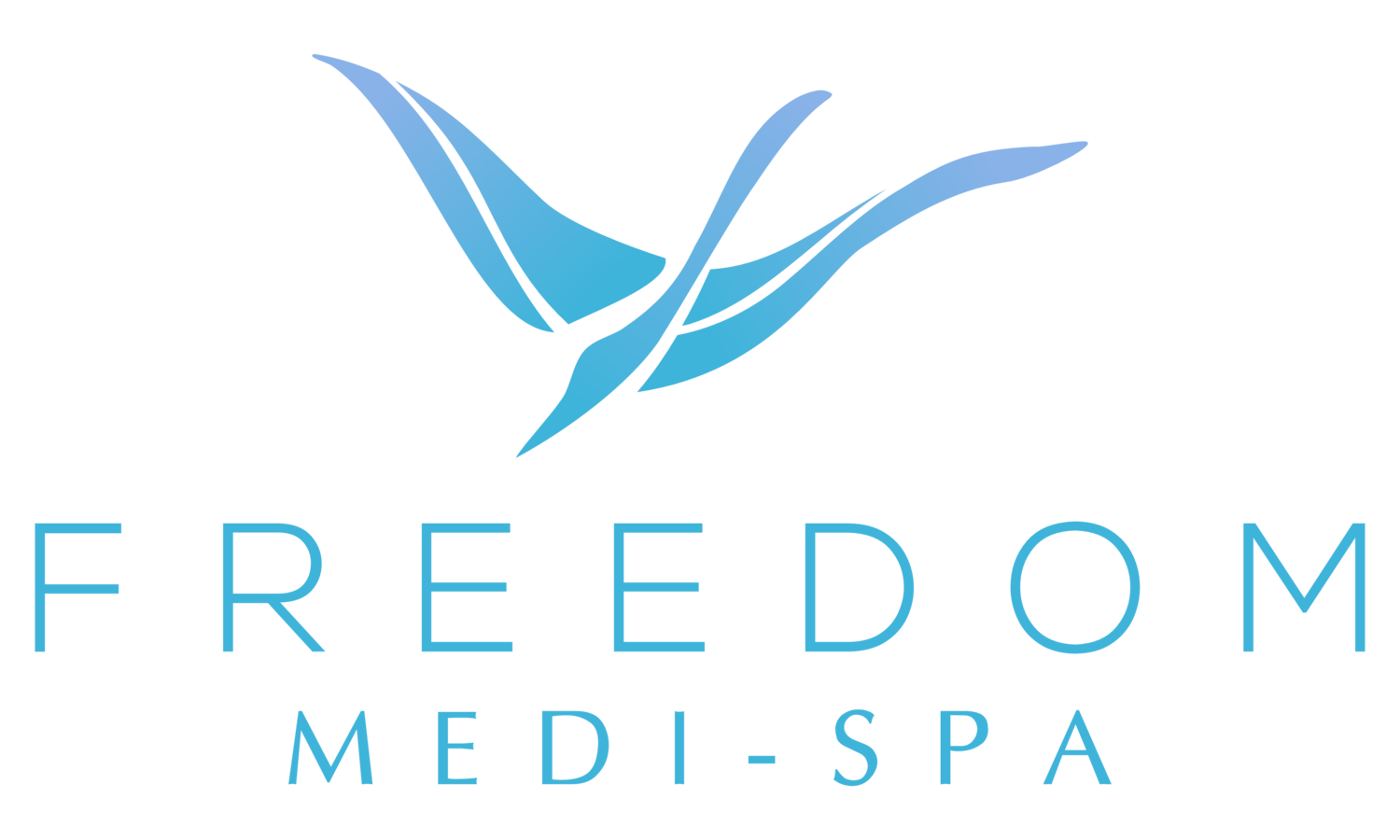Ingredients to Watch For When Buying Sunscreen
/We have officially hit the first long weekend of the summer! Yahoo!
As you know, we ALWAYS encourage sun safety and for the last few years, Freedom Medi-Spa has provided an extensive sunscreen report, equipping you with the knowledge and confidence for when you’re out buying sunscreen.
We are currently working on our 2022 list, but in the meantime, we wanted to remind you of the INGREDIENTS TO AVOID when stocking up on sunscreen.
Firstly, it’s important to wear a 30+ SPF broad-spectrum sunscreen on your face and body daily, and to reapply every 2 hours of sun exposure, or after swimming or excessive sweating.
We recommend purchasing sunscreens with mineral-based ingredients ie. Zinc Oxide, Titanium Dioxide or Mexoryl. Look for a minimum of 5% of each mineral-based ingredient. This will help the sunscreen to keep stable for a longer period. Some with lower percentages will degrade quickly - you'll need to reapply sooner than 2 hours.
Here’s the thing: we know it’s sometimes difficult to avoid all chemicals. That said, some chemicals are more dangerous than others and some are known carcinogens.
That’s why it’s imperative to READ THE LABELS.
Here’s the quick and dirty:
On the good list – Zinc Oxide, Titanium Dioxide or Mexoryl
On the mild-risk list – Avobenzone and Octisalate
On the moderate-risk list – Homosalate and Octocrylene
And on the PUT IT BACK ON THE SHELF list – OXYBENZONE and OCTINOXATE.
When shopping, if you discover your fave sunscreen has ingredients on the mild or moderate risk lists, look at the percentage of that particular ingredient – the lower, the better – and try and stay less than 10%.
Protection from the sun still outweighs the risk in many cases, but it is a good idea to compare the bottles and find ones with the least possible risk.
Shopping for kids? Be mindful because sometimes, the kids’ sunscreens have MORE chemical concentration than the adult ones.
Of course, at Freedom, we carry AlumierMD Sheer Hydration and Clear Shield which are 40SPF mineral-based sunscreen and safe for everyone, including babies 6 mos and up.
Stay tuned for our sunscreen report and send us a photo of your sunscreen for us to assess!
Enjoy the long weekend!
2021 Sunscreen Report
/Let’s get right to it, shall we?
Not all sunscreen is created alike. As consumers, we must be diligent to research the sunscreen we are applying to our bodies, as well as our children’s bodies. As our skin is the largest organ, it will absorb what we apply – this is why understanding what’s inside our products is not only important but imperative for our safety.
As more and more research is conducted on sunscreen, you are going to notice a real shift in what’s sold in stores and online. Just this week, studies in the US found Benzene in some popular sunscreens. We have already contacted Health Canada and will await a response to see if they will be conducting similar studies here.
As you have come to know, we will always remind you to apply sunscreen – every day – and if you’re exposed to the sun (beach, pool, park, golf, garden, etc), reapply liberally. While the safest way to reduce your sun exposure is to stay covered, it’s also a good idea to stay out of the sun during peak hours.
I’ll add a third rule here: opt for MINERAL or PHYSICAL sunscreens, not chemical ones. Mineral sunscreens sit on your skin. Look for active ingredients like Zinc Oxide and Titanium Dioxide. These may go on a bit thicker (although they have come a long way), but they are the safest and the only ingredients that get a Green Light from me this year.
To complicate this even further, the SPF on the label may not be 100% accurate. Studies state a mathematical equation (I know!) needs to be used to accurately calculate the actual protection factor. Zinc percentage is equal to 1.6 % coverage and Titanium Dioxide is equal to approx. 4% coverage. (Chemical sunscreens also have to be calculated, but require an in-lab sunscreen test.) The moral here: don’t entirely trust the number on the label. The higher the percentage of Zinc and/or Titanium Dioxide = the better.
While there are many sunscreens that make the RED LIGHT or AVOID list this year, it’s important to know why. If you see ingredients like Oxybenzone or Octinoxate, PUT IT DOWN. These ingredients have been known to cause cancer, as well, they are hormone disruptors. Further, if certain chemicals have high percentages, stay away. (ie. 10%+ of Homosalate is too high)
And finally, the moderate risk or CAUTION category: these are sunscreens that are still chemically based, but do not contain the 2 mentioned above. It’s best to use caution with these sunscreens and try and purchase a mineral sunscreen instead.
If you have a mineral-based SPRAY sunscreen, you get a pass on the ingredient list, but a warning on type – there are still many debates on the efficacy of application with a spray sunscreen, as well as the particles that can end up in the air and into your lungs. If using a spray, only spray your body and hold your breath when you do, move away from that area, and then rub in the product.
Here is the 2021 Freedom Med-Spa Sunscreen Report:
Your Favourite Sunscreens Compared
/We compared over 30 recognizable brands, identifying their active ingredients and potential hazardous ones. Use these cheat sheets when you’re purchasing your next sunscreen.
Read MoreWhat's In Your Sunscreen?
/There’s a lot of information out there when it comes to sunscreen. What do you put on your face versus your body?
Look for words and phrases like:
Broad Spectrum: it means it covers UVA and UVB rays
MINERAL-BASED/PHYSICAL: means it sits on your skin
Active Ingredients: what are they, and their percentages
SPF 30 (at minimum)
Be mindful of words like "organic", "natural"












